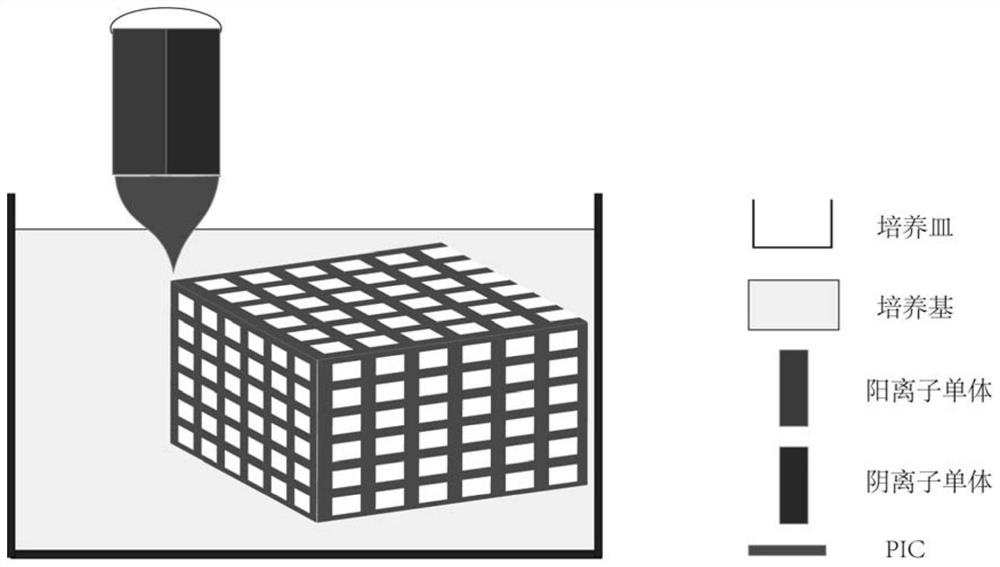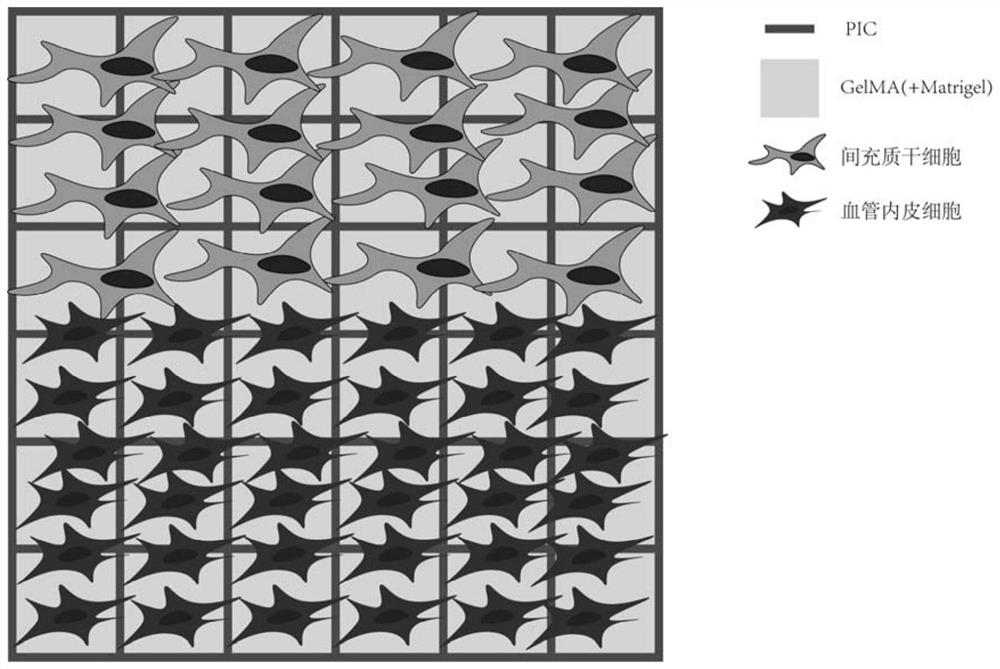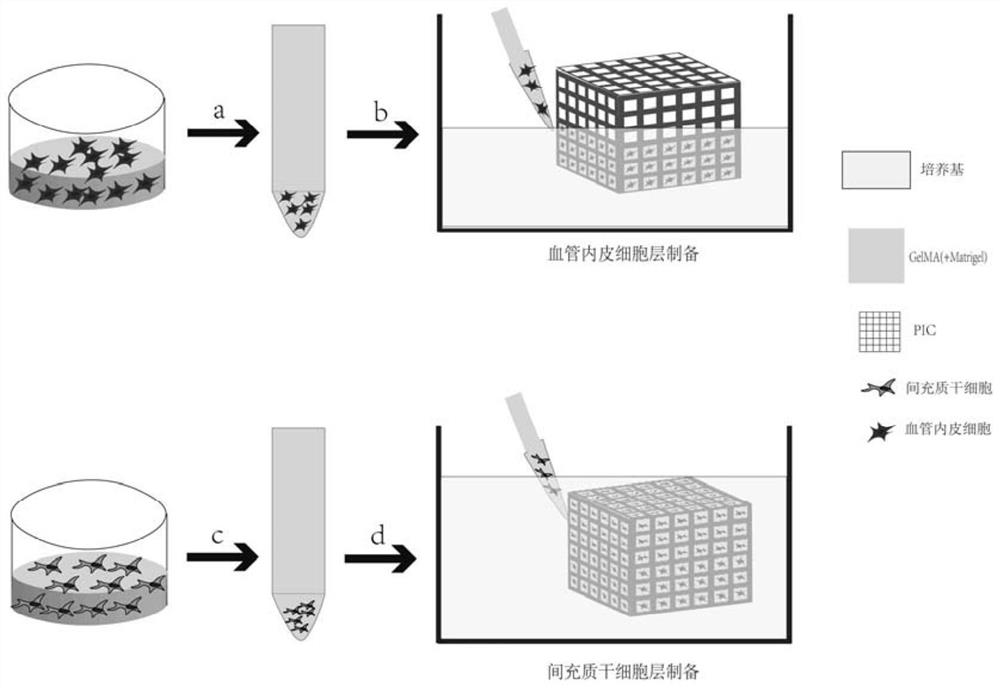A kind of tissue engineered bone based on multilayer cell grid and its preparation method
A technology for tissue engineering bone and stratified cells, applied in tissue regeneration, additive processing, pharmaceutical formulations, etc., can solve problems such as poor mechanical properties and difficult to degrade, and achieve the effect of maintaining activity, high strength, and good mechanical properties
- Summary
- Abstract
- Description
- Claims
- Application Information
AI Technical Summary
Problems solved by technology
Method used
Image
Examples
Embodiment 1
[0041] 1. Preparation of Grid Scaffolds
[0042] (1) Preparation of printing materials
[0043]Sodium p-styrenesulfonate (NaSS, anionic monomer) and 3-(methacryloylamino)propyltrimethylammonium chloride (MPTC, cationic monomer) were added to 0.05mol% of 2-ketopentadiene Acid (photoinitiator), at 365nm wavelength, 7.5mW / cm2Ultraviolet light irradiation for 8 hours, prepared 1mol / L anion precursor aqueous solution and cationic precursor aqueous solution respectively. It was then precipitated by adding ethanol, and the precipitate was dried in an oven. PMPTC transparent particles with a weight average molecular weight of 4×10 3 g / mol and a polydispersity of 1.5 and PNaSS transparent particles with a weight average molecular weight of 1×10 6 g / mol and a polydispersity of 3.4 were obtained. Dissolve the two kinds of polymer transparent particles in deionized water to prepare 0.095-0.125mol / L solution, slowly drop the equal volume of the two solutions into 250mL deionized water, s...
Embodiment 2
[0057] 1. Preparation of Grid Scaffolds
[0058] (1) Preparation of printing materials
[0059] Sodium p-styrenesulfonate (NaSS, anionic monomer) and 3-(methacryloylamino)propyltrimethylammonium chloride (MPTC, cationic monomer) were added to 0.05mol% of 2-ketopentadiene Acid (photoinitiator), at 365nm wavelength, 7.5mW / cm2Ultraviolet light irradiation for 8 hours, prepared 1mol / L anion precursor aqueous solution and cationic precursor aqueous solution respectively. It was then precipitated by adding ethanol, and the precipitate was dried in an oven. PMPTC transparent particles with a weight average molecular weight of 4×10 3 g / mol and a polydispersity of 1.5 and PNaSS transparent particles with a weight average molecular weight of 1×10 6 g / mol and a polydispersity of 3.4 were obtained. Dissolve the two kinds of polymer transparent particles in deionized water to prepare 0.095-0.125mol / L solution, slowly drop the equal volume of the two solutions into 250mL deionized water, ...
PUM
| Property | Measurement | Unit |
|---|---|---|
| diameter | aaaaa | aaaaa |
| percent by volume | aaaaa | aaaaa |
Abstract
Description
Claims
Application Information
 Login to View More
Login to View More - R&D
- Intellectual Property
- Life Sciences
- Materials
- Tech Scout
- Unparalleled Data Quality
- Higher Quality Content
- 60% Fewer Hallucinations
Browse by: Latest US Patents, China's latest patents, Technical Efficacy Thesaurus, Application Domain, Technology Topic, Popular Technical Reports.
© 2025 PatSnap. All rights reserved.Legal|Privacy policy|Modern Slavery Act Transparency Statement|Sitemap|About US| Contact US: help@patsnap.com



